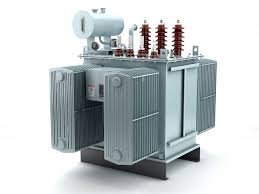When dealing with aging or faulty Used Transformers, rewinding can often restore performance without the cost of full replacement. Whether you’re a facility manager, electrician, or transformer reseller, understanding the rewinding process is essential for making smart, cost-effective decisions. In this guide, we’ll walk you through the entire rewinding process — step by step — ensuring you know what to expect and how to maintain quality throughout.
At JJ Transformers, we specialize in transformer solutions, including repair, rewinding, and recycling. Our transformer services are trusted across industries because we combine deep expertise with top-quality parts and procedures.
Why Rewinding Matters for Used Transformers
Before diving into the process, let’s explore why rewinding is necessary. Over time, transformers face insulation breakdown, overheating, or electrical faults that reduce their efficiency. Instead of investing in new equipment, many clients choose to sell used transformers or refurbish them — especially when the core and laminations are still in good shape.
Rewinding breathes new life into old units, making them as reliable as newer ones — at a fraction of the cost. It’s also an eco-friendly choice, reducing the need for new raw materials and energy-intensive production.
Step 1: Initial Inspection and Testing
The rewinding journey begins with a thorough inspection. Experts examine the transformer casing, winding condition, oil (for oil-cooled types), and insulation materials. A megger test is often performed to evaluate insulation resistance.
At this point, any burnt or broken windings, signs of overheating, or voltage imbalance are identified. Transformers deemed viable for repair then move to the next step.
Step 2: Disassembly of the Transformer
The transformer is carefully dismantled. This involves removing the core, coils, and other internal components. Each part is handled with care to avoid damaging reusable sections.
Many businesses that buy used transformers prioritize units that are easy to disassemble without core distortion — a sign of good build quality.
Step 3: Coil Unwinding and Cleaning
Next comes the removal of damaged windings. These coils are unwound manually or using specialized equipment. The core and bobbins are thoroughly cleaned, removing carbon traces, oil residue, and dust.
This step is critical. Cleanliness affects insulation performance and overall reliability of the rewound transformer.
Step 4: Core and Material Inspection
Before new coils are wound, the core is tested for insulation resistance and mechanical integrity. Any laminations with rust, burrs, or warping are replaced. This ensures optimal magnetic flux and reduces losses during operation.
Old power transformer units often contain copper coils. If salvageable, these may be reused, or new copper or aluminum wire is introduced depending on the load requirements.
Step 5: Rewinding Process
Now the real rewinding begins. Windings are redone layer by layer using automatic coil winding machines for precision. Proper tension, insulation spacing, and turns ratio are maintained strictly.
The wire gauge, number of turns, and core dimensions are all verified to match the original design specs. This ensures that voltage and current ratings stay within safe operating limits.
Companies dealing with used transformers for sale near me often ask for documentation proving accurate rewinding, as it’s a sign of long-term durability.
Step 6: Insulation and Assembly
Once the windings are in place, each coil is insulated using high-grade varnish or resin, depending on the transformer class. After drying (often in a baking oven), the parts are reassembled.
Tightening, alignment, and sealing are done to factory specifications. This minimizes noise and heat loss.
Step 7: Testing and Quality Assurance
Post-assembly, the unit goes through extensive testing:
- Voltage ratio testing
- Short-circuit and open-circuit testing
- Insulation resistance
- Load testing
Only when all parameters are met is the transformer approved for reuse or sale. Many reputable dealers who sell transformer ensure these tests are passed before putting units back in the market.
Step 8: Painting, Labeling, and Final Packing
Finally, the transformer exterior is painted for protection and appearance. Labels indicating specifications, rewinding date, and safety marks are attached. It is then packed securely to prevent transport damage.
The Role of Rewinding in Extending Transformer Life
When a business opts for rewinding instead of replacement, they gain:
- Extended service life of their used transformers
- Reduced maintenance costs
- Minimal environmental impact
- Enhanced reliability and efficiency
Rewinding is also important in remote areas where getting a new transformer may be costly or time-consuming. Instead, refurbished or rewound surplus transformers can be delivered much faster.
When Should You Consider Rewinding?
- If the transformer trips frequently
- Signs of overheating or oil leaks
- Irregular voltage output
- Audible humming or buzzing noises
Not sure if your transformer qualifies for rewinding? Reach out to we buy transformers specialists for a free assessment.
Final Thoughts
Transformer rewinding is a cost-effective, eco-friendly solution for maintaining and extending the life of Used Transformers. It combines technical skill, precision equipment, and quality materials to bring aging units back to life. Whether you’re an industrial operator or an electrical supplier, understanding this process helps you make informed decisions.
If you’re looking for trusted transformer company support, JJ Transformers has the experience and tools to guide you through every step — from inspection to installation.



